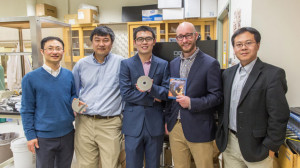
An interdisciplinary team from the McCormick School of Engineering and Applied Science discovered that using the data storage pattern from a Blu-ray disc improves solar cell performance and that video content doesn’t matter.
Credit: Northwestern University
Since its launch, the Blu-ray disc has been promoted as the bigger, better, and more impressive way to view movies at home. But researchers from Northwestern University are now telling us that Blu-ray discs are good for more than just giving us a better home viewing experience.
An interdisciplinary team from the McCormick School of Engineering and Applied Science at Northwestern University has published research stating that Blu-ray discs can be used to improve the performance of solar cells.







